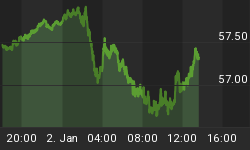This week saw the type of downside volatility in the precious metals market that will be remembered for years to come. For those of us who have been long gold, and silver in particular, the memories will not be pleasant. While many had been expecting a pullback in silver, when the violence did come it was nevertheless shocking. Silver shed one third of its value in less than one week. And while gold was pulled down by the general sell off in all commodities (oil, copper, coffee, etc.) the yellow metal shed only 6.5% during the carnage. Those mild losses should remind us that gold is not just another commodity, but has monetary qualities that tend to smooth out volatility. But will silver survive the vicious downturn?
First, despite all the valid reasons that, in an era of perpetual quantitative easing, silver had become an attractive asset class, it had become clear in recent days that it was overbought. Leading up to April 28, the price of silver rose by more than 150 per cent in U.S. dollar terms over the prior year. On Wall Street momentum always attracts momentum, and as a result, the ascent accelerated in April, with silver rising 31 per cent from April 1 to April 28.
A "hot" commodity tends to attract leveraged speculators. As a result, the rise became more technical than fundamental. Its recent sell off should be viewed on the same terms.
After an exponential rise, supercharged by leveraged speculators, silver was bound to attract the attention of short sellers. In addition, silver speculation became more expensive as the Chicago Mercantile Exchange raised the margin requirement for buying silver futures five times in just one week! Factoring in all of these increases, the last of which becomes effective this coming Monday, the cost of owning silver futures contracts will have increased a staggering 84 per cent from the beginning of May. The rationale behind these moves requires serious inquiry...which I will leave to more informed columnists. But the results were predictably dramatic, as many leveraged players were forced to liquidate.
In addition to these technical catalysts, other factors contributed to the decline this week. Facing pressure from domestic exporters who complain about an overly strong euro, there are signs that the ECB is losing its commitment to vigilance against inflation. This has led to speculation that the U.S. dollar could strengthen for the remainder of the year. This could adversely affect the price of precious metals. In addition, with private sector unemployment rising in the United States, there is a risk that the U.S. economy could be entering a second, or double dip recession. This would lower the risks of overt inflation and dampen the industrial demand for silver.
But as far as long term fundamentals are concerned, the case for precious metals remains intact. First, as long as the Federal Reserve and other central banks around the world continue to treat fiat currencies as monopoly money, investors will be seeking alternative currencies as a hedge against inflation. But until bank lending to consumers and businesses increases dramatically, the dangers of hyperinflation will remain largely hidden from the broad swath of investors. As a result, silver's upward price movements will be vulnerable to panic selling.
But from my perspective the biggest driver in purchases of silver and gold is likely a fear of a meltdown of the dollar and a collapse in the financial system. There are few signs that these fears have abated with the selloff in silver. The U.S. dollar is still standing close to a 3-year low against the dollar index. If more rumors spread that the dollar may lose its reserve status, the greenback could plummet. It is perhaps this perceived risk that has provided the majority of the force behind increases in precious metals over the past year. It is important to remember that the fundamental strength of metals attracted the speculators, but speculators did not create the bull market. It is my feeling that it will endure without them.
While a threatened recession and a stronger dollar should deflect inflation expectations in the short-term, the longer-term risk of a debt crisis spreading into a currency crisis remains. Indeed, the risks of a currency crisis are increasing. For investors who share this view, and who can tolerate the volatility, the reduced prices of silver may be attractive.
Subscribe to Euro Pacific's Weekly Digest: Receive all commentaries by Peter Schiff, Michael Pento, and John Browne delivered to your inbox every Monday.
Click here for free access to Euro Pacific's new special report: What's Ahead for Canadian Energy Trusts?
Be sure to pick up a copy of Peter Schiff's hit economic fable, How an Economy Grows and Why It Crashes.
















